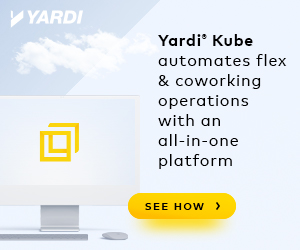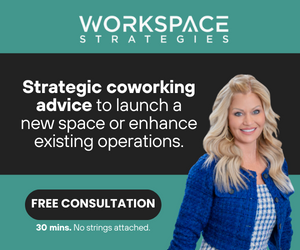- Employers exhibit nostalgia for pre-pandemic office settings due to psychological biases in memory — influencing their perception of past work environments.
- Organizational leaders’ memories and attitudes towards traditional office work are shaped by their personal career experiences and the historical association of physical offices with professional identity and success.
- Strategies to overcome office nostalgia include recombining existing ideas to create new work models, adopting an experimental approach to finding effective hybrid work solutions, and embracing diverse perspectives to foster innovation in workplace design.
This article was written by Ware Malcomb’s Cynthia Milota and Jinger Tapia for Work Design Magazine.
Nostalgia is defined as the “sentimental longing for the past, typically for a period or place with happy associations,” (Wikipedia, 2023). Almost four years since the pandemic upended the world of work, employees have moved on, yet many employers are longing for the good old days with everyone always working in the office. Why is that?
Human Nature & Leader Legacy
It’s lonely at the top. Leaders are expected to chart the course for their organizations, deliver innovation, foster a thriving culture, and make a profit. The ecosystem of the office has been central to the power dynamics states McKinsey partner emeritus Bill Schaninger. “People who are in charge are still anchored on that (in office) construct because it is what they’ve known and how they’ve been trained,” (Schaninger, 2022).
The office was often the physical manifestation of an organization’s success. Asking the question “tell me where you work and I’ll tell you who you are,” INSEAD professor Gianpiero Petriglieri explores the identity tied up in our workplaces, at every level, but especially leadership, (Petriglieri, 2020).
Annie Dean, former Meta and current Atlassian flexible work guru chalks up this issue of office nostalgia to status quo. “It makes sense that people in leadership are reflecting on their own experiences of how they came up through the corporate world. And it was largely office based and in-person and that worked,” (Hess, 2023).
While employers are embracing work away from the office, with 72% deploying some sort of hybrid model (Leesman, 2022), there are clinical explanations for how the office was perceived in the past, which helps to explain the 2020 hindsight phenomenon.
The Psychology of Memory
These four memory traits offer perspective on how employers and their leaders recall the pre-pandemic office.
Rosy Retrospection is the tendency to “recall the past more fondly than the present…(and) is a cognitive bias that runs parallel with the concept of nostalgia,” (Decision Lab, 2023). Think rose colored glasses, where things in the past seemed better than they really were.
Episodic Memory is the brain’s ability to “mentally time travel to a specific past event,” (Diamond, 2021). Memory researchers are exploring how faithful episodic memory is. “On the one hand, we implicitly believe that our own memories correspond to the reality of the past…but on the other hand…memory is not a perfect record of the past,” (Diamond, 2021).
Recall Bias is defined when “previous events or experiences are not accurately portrayed, or details are omitted,” (Catalogue of Bias, 2023). Cited in the literature as an issue with self-reporting, these errors in recall “may be influenced by subsequent events and experiences,” (Catalogue of Bias, 2023).
While Selective Memory is not just your boss claiming that she approved your PTO, it is defined as “the ability to retrieve certain facts and events but not others,” (Dodson, 2023). Influenced by emotions and the ability to process new information, those with selective memory believe their recollections are complete and accurate.
Organizational and leadership memories are impacted by these psychological factors.
Strategies to Move Past the 2020 Office Nostalgia
Exploring change from the psychology and business perspective, Adam Alter, in his book, Anatomy of a Breakthrough: How to get Unstuck When It Matters Most, offers strategies to move forward.
- Recombination Over Radical Originality
As organizations perfect what hybrid looks like for them, Alter suggests the idea of recombinations of old ideas that can “form something evolutionarily different,” (Alter, 2023). Merging two good but disparate ideas can be more attainable than a revolutionary new hybrid working model.
- Adopt an Experimental Mindset
Examining the return to the office, few organizations have emerged out of the box with a single method for success. “Before you strike gold, you need to spend a period of time exploring different options, approaches, and techniques,” (Alter, 2023). This method of piloting ideas for a new future state office is iterative and may take time, but will ultimately deliver a more robust solution, road tested and endorsed by employees.
- Embrace Different Perspectives
Employers generally developed return to the office plans based on leadership’s perspective. Alter suggests that “the best way to capitalize on the value of other people is to consult with those who are fundamentally different from you,” (Alter, 2023). Considering how the office supports people with a completely different viewpoint “was a recipe for concocting breakthroughs,” (Alter, 2023).
Methods to implement these strategies include participation in leadership forums, employee listening tours, training for managing hybrid workforces and intentionally listening for weak signals and outsider perspectives.
Nostalgia, human nature, power dynamics, and memory impact why employers are stuck in the past office. Recombinations of old ideas, an experimental mindset and different viewpoints will move employers into their future office.

 Dr. Gleb Tsipursky – The Office Whisperer
Dr. Gleb Tsipursky – The Office Whisperer Cat Johnson – Coworking Marketing Maven
Cat Johnson – Coworking Marketing Maven Angela Howard – Culture Expert
Angela Howard – Culture Expert Drew Jones – Design & Innovation
Drew Jones – Design & Innovation Andrea Pirrotti-Dranchak – Competitive Advantage
Andrea Pirrotti-Dranchak – Competitive Advantage Jonathan Price – CRE & Flex Expert
Jonathan Price – CRE & Flex Expert Jeremy Fennema – Tech Innovation Alchemist
Jeremy Fennema – Tech Innovation Alchemist








